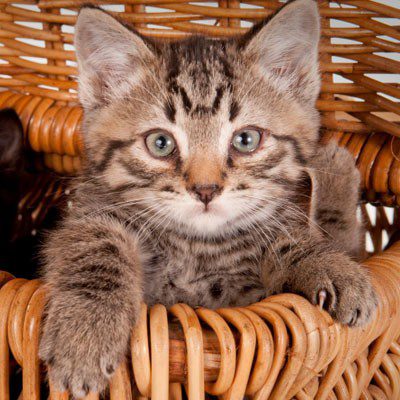Your newly adopted tabby cat Frankie is about to embark on a lifetime of comfort. This morning, you brought this handsome boy home from your town’s animal shelter. Your four-year-old feline housemate quickly explored his comfy bed, numerous cat toys, and convenient kitchen feeding station. Next, he hopped onto the window sill to ogle the birds. Tomorrow, he’ll visit your veterinarian for a new patient exam. During this visit, ensuring that Frankie is up-to-date on his vaccinations will be a priority, as part of our comprehensive Vet Wellness & Pet Vaccinations services. The vet will also prescribe a high-quality diet. You’ve already decided that Frankie will be a spoiled-rotten indoor cat. This stable living environment will give him several distinct advantages over his feline cousins who live outdoors or split their time between home and the streets.
No Nasty Animal Fights
Although Frankie has been neutered, he’s a scrappy guy who seems to enjoy conflict. By keeping him indoors, he can’t do battle with other cats, dogs, skunks, or raccoons. He’ll avoid potential injuries as well as rabies risks from stray cats who frequent the neighborhood.
No Toxic Plants or Poisons
If your curious cat roamed outside, he could easily chomp on toxic plants that could cause him serious medical problems. He might also encounter rat poison, another substance very dangerous to cats. By keeping him indoors, and ensuring your home doesn’t contain any such hazards, you’ll greatly minimize his risk of harm.
Reduced Disease Risks
If Frankie the Explorer spent time outdoors, he could possibly contract highly contagious diseases such as rabies or feline leukemia. These dangerous illnesses are transmitted by infected cats or other animals. In addition, you suspect your carnivorous housemate would enjoy chowing down on birds and mice, which can carry infections. If he remains inside, he’ll avoid all of these hazards.
Early Symptom Detection
If Frankie stays at home, you’ll have many close-up interactions with him throughout the day. By petting and stroking your cat, and observing his daily habits, you’ll be better able to detect subtle changes that could indicate a medical issue. When you find a potential concern, notify your vet quickly so he can provide a diagnosis and treatment.
Finally, you (and your home) will be happier if Frankie doesn’t venture outside. He won’t track in annoying dirt or debris; and he won’t be bringing dead animals inside on a regular basis. However, if you ever face the situation of a lost indoor cat, our article “Tips on Finding a Lost Cat” provides essential strategies to help bring them home safely. To learn about additional benefits of keeping your cat indoors, contact your veterinarian for expert assistance.
Contact us, your local animal clinic in Live Oak, FL!




